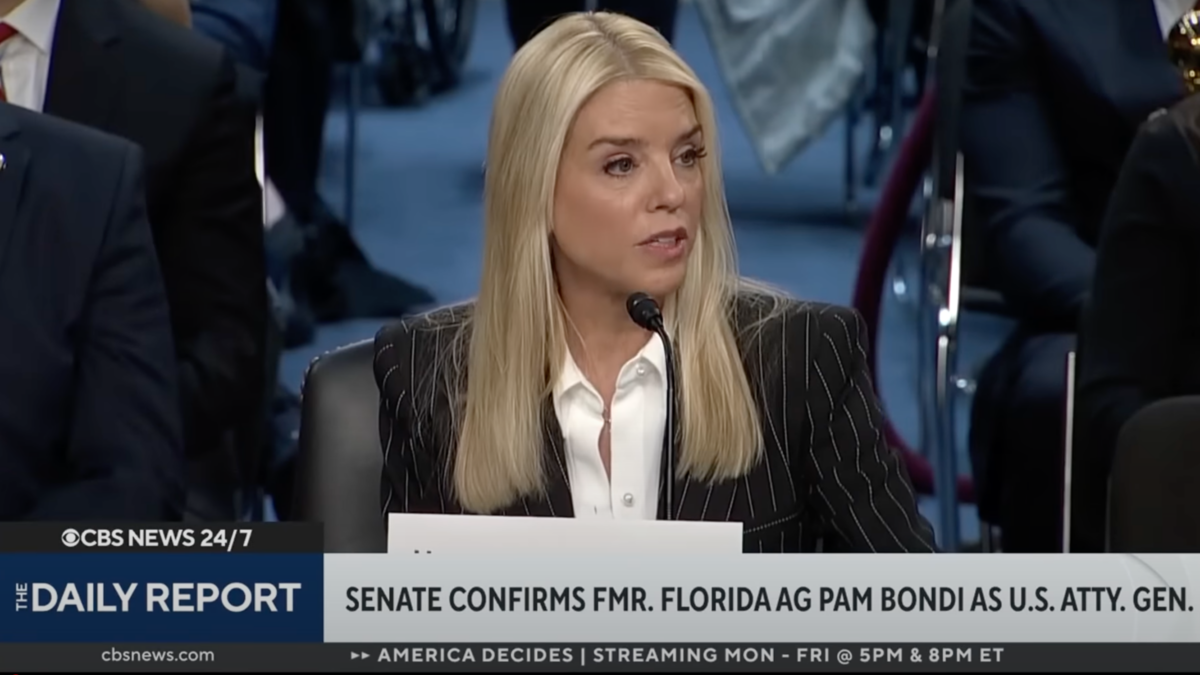
On Monday, Sen. Lamar Alexander (R-TN) and others introduced their latest version of an Obamacare “stability” bill. In general, the bill would appropriate more than $60 billion in funds to insurance companies, propping up and entrenching Obamacare rather than repealing it.
Also on Monday, the Congressional Budget Office released its analysis of the updated legislation. In CBO’s estimate, the bill would increase the deficit by $19.1 billion, while marginally increasing the number of insured Americans (by fewer than 500,000 per year).
A more detailed summary follows, along with an analysis of the CBO score. Changes from the original Alexander-Murray legislation introduced in October are highlighted below, as are possible conservative concerns with the legislation.
Can You Scream ‘Big Insurance Bailout’?
Stability Fund: Provides $500 million in funding for fiscal year 2018, and $10 billion in funding for each of fiscal years 2019, 2020, and 2021, for invisible high-risk pools and reinsurance payments. The $500 million this year would provide administrative assistance to states to establish such programs, with the $10 billion in each of the following three years maintaining them.
Grants the secretary of Health and Human Services (HHS), in consultation with the National Association of Insurance Commissioners, the authority to allocate the funds to states—which some conservatives may be concerned gives federal bureaucrats authority to spend $30.5 billion wherever they choose.
Includes a provision requiring a federal fallback for 2019 (and only 2019) in states that choose not to establish their own reinsurance or invisible high-risk program. Moreover, these federal fallback dollars must be used “for market stabilization payments to issuers.” Some conservatives may be concerned that this provision—which, like the rest of the $30 billion in “stability funds,” did not appear in the original Alexander-Murray legislation—undermines state flexibility, by effectively forcing states to bail out insurers, whether they want to or not.
Allows states to use the $30 billion in federal reinsurance funds for waivers under Section 1332 of Obamacare (as amended; details below). States can establish invisible high-risk pools, in which insurers cede higher-than-average claims to the pool; reinsurance programs, in which the program assumes a portion of the costs for individuals with high claims; or some other reinsurance mechanism.
Cost-Sharing Reduction Payments: The bill appropriates roughly $30-35 billion in cost-sharing reduction (CSR) payments to insurers, which subsidizes their provision of discounts on deductibles and co-payments to certain low-income individuals enrolled on insurance exchanges.
Last October, President Trump announced he would halt the payments to insurers, concluding the administration did not have authority to do so under the Constitution. As a result, the bill includes an explicit appropriation, totaling roughly $3-4 billion for the final quarter of 2017, and $9-10 billion for each of years 2019, 2020, and 2021, based on CBO spending estimates. This language represents a change from the original Alexander-Murray bill, which appropriated payments for 2018 and 2019 only.
For 2018, the bill appropriates CSRs only for 1) states choosing the Basic Health plan option (which gives states a percentage of Obamacare subsidies as a block grant to cover low-income individuals) and 2) insurers for which HHS determines, in conjunction with state insurance commissioners, that the insurer assumed the payment of CSRs when setting rates for the 2018 plan year. This language represents a change from the original Alexander-Murray bill, which set up a complicated system of rebates that would have allowed insurers potentially to pocket billions of dollars by retaining “extra” CSR payments for 2018.
Moreover, the bill also provides retrospective legal justification for payments the U.S. Treasury made from January 2014 through September 2017, by listing the source of an appropriation for them. This provision was not included in the original Alexander-Murray bill. Some conservatives may be concerned that this provision provides ex post facto justification for unconstitutional Obama administration actions—including potential criminal actions under the Anti-Deficiency Act, which prohibits federal employees from spending money without a valid congressional appropriation.
Some conservatives may be concerned that, because insurers understood for well over a year that a new administration could terminate these payments in 2017, the agreement would effectively subsidize their flawed assumptions. Some conservatives may be concerned that action to continue the flow of payments would solidify the principle that Obamacare, and therefore insurers, are “too big to fail,” which could only encourage further risky behavior by insurers in the future.
Get Ready to Cough Up More for Abortion
Hyde Amendment: With respect to the issue of taxpayer dollars subsidizing federal insurance plans covering abortion, the bill does not apply the Hyde Amendment protections retrospectively to the 2017 CSR payments, or to the (current) 2018 plan year. With respect to 2019 through 2021, the bill prohibits federal funding of abortions, except in the case of rape, incest, or to save the life of the mother. However, the bill does allow states to use state-only dollars to fund other abortions, as many state Medicaid managed care plans do currently.
According to the pro-abortion Guttmacher Institute, with respect to coverage of abortions in state Medicaid plans:
- 32 states and the District of Columbia follow the federal Hyde Amendment standard, funding abortion only in the cases of rape, incest, or to save the life of the mother;
- One state provides abortion only in the case of life endangerment; and
- 17 states provide coverage for most abortions—five voluntarily, and 12 by court order.
Some conservatives may therefore be concerned that the exception for state-only funding of abortion coverage could allow state-based courts to require funding of exchange plans that cover abortion.
State Waiver Processes: The bill would streamline the process for approving state innovation waivers, authorized by Section 1332 of Obamacare. Those waivers allow states to receive their state’s exchange funding as a block grant, and exempt themselves from the individual mandate, employer mandate, and some (but not all) of Obamacare’s insurance regulations.
Specifically, the bill would:
- Extend the waivers’ duration, from five years to six, with unlimited renewals possible;
- Prohibit HHS from terminating waivers during their duration (including any renewal periods), unless “the state materially failed to comply with the terms and conditions of the waiver”;
- Require HHS to release guidance to states within 60 days of enactment regarding waivers, including model language for waivers—a change from the 30 days included in the original Alexander-Murray bill;
- Shorten the time for HHS to consider waivers from 180 days to 120—a change from 90 days in the original Alexander-Murray bill;
- Allow a 45-day review for 1) waivers currently pending; 2) waivers for areas “the Secretary determines are at risk for excessive premium increases or having no health plans offered in the applicable health insurance market for the current or following plan year”; 3) waivers that are “the same or substantially similar” to waivers previously approved for another state; and 4) waivers related to invisible high-risk pools or reinsurance, as discussed above. These waivers would initially apply for no more than three years, with an extension possible for a full six-year term;
- Allow governors to apply for waivers based on their certification of authority, rather than requiring states to pass a law authorizing state actions under the waiver—a move that some conservatives may be concerned could allow state chief executives to act unilaterally, including by exiting a successful waiver on a governor’s order.
State Waiver Substance: On the substance of innovation waivers, the bill would rescind regulatory guidance the Obama administration issued in December 2015. Among other actions, that guidance prevented states from using savings from an Obamacare/exchange waiver to offset higher costs to Medicaid, and vice versa.
While supporting the concept of greater flexibility for states, some conservatives may note that, as this guidance was not enacted pursuant to notice-and-comment, the Trump administration can revoke it at any time—indeed, should have revoked it last year. Additionally, the bill amends, but does not repeal, the “guardrails” for state innovation waivers. Under current law, Section 1332 waivers must:
- “Provide coverage that is at least as comprehensive as” Obamacare coverage;
- “Provide coverage and cost-sharing protections against excessive out-of-pocket spending that are at least as affordable” as Obamacare coverage;
- “Provide coverage to at least a comparable number of [a state’s] residents” as under Obamacare; and
- “Not increase the federal deficit.”
Some conservatives have previously criticized these provisions as insufficiently flexible to allow for conservative health reforms like Health Savings Accounts and other consumer-driven options.
The bill allows states to provide coverage “of comparable affordability, including for low-income individuals, individuals with serious health needs, and other vulnerable populations” rather than the current language in the second bullet above. It also clarifies that deficit and budget neutrality will operate over the lifetime of the waiver, and that state innovation waivers under Obamacare “shall not be construed to affect any waiver processes or standards” under the Medicare or Medicaid statutes for purposes of determining the Obamacare waiver’s deficit neutrality.
The bill also makes adjustments to the “pass-through” language allowing states to receive their exchange funding via a block grant. For instance, the bill adds language allowing states to receive any funding for the Basic Health Program—a program states can establish for households with incomes of between 138-200 percent of the federal poverty level—via the block grant.
Some conservatives may view the “comparable affordability” change as a distinction without a difference, as it still explicitly links affordability to Obamacare’s rich benefit package. Some conservatives may therefore view the purported “concessions” on the December 2015 guidance, and on “comparable affordability” as inconsequential in nature, and insignificant given the significant concessions to liberals included elsewhere in the proposed legislative package.
So Much for Market-Boosting Deregulation
Catastrophic Plans: The bill would allow all individuals to purchase “catastrophic” health plans, beginning in 2019. The legislation would also require insurers to keep those plans in a single risk pool with other Obamacare plans—a change from current law.
Catastrophic plans—currently only available to individuals under 30, individuals without an “affordable” health plan in their area, or individuals subject to a hardship exemption from the individual mandate—provide no coverage below Obamacare’s limit on out-of-pocket spending, but for “coverage of at least three primary care visits.” Catastrophic plans are also currently subject to Obamacare’s essential health benefits requirements.
Outreach Funding: The bill requires HHS to obligate $105.8 million in exchange user fees to states for “enrollment and outreach activities” for the 2019 and 2020 plan years—a change from the original legislation, which focused on the 2018 and 2019 plan years. Currently, the federal exchange (healthcare.gov) assesses a user fee of 3.5 percent of premiums on insurers, who ultimately pass these fees on to consumers.
In a rule released in December 2016, the outgoing Obama administration admitted that the exchange is “gaining economies of scale from functions with fixed costs,” in part because maintaining the exchange costs less per year than creating one did in 2013-14. However, the Obama administration rejected any attempt to lower those fees, instead deciding to spend them on outreach efforts. The agreement would re-direct portions of the fees to states for enrollment outreach.
Some conservatives may be concerned that this provision would create a new entitlement for states to outreach dollars. Moreover, some conservatives may object to this re-direction of funds that ultimately come from consumers towards more government spending. Some conservatives may support taking steps to reduce the user fees—thus lowering premiums, the purported intention of this “stabilization” measure—rather than re-directing them toward more government spending, as the agreement proposes.
The bill also requires a series of biweekly reports from HHS on metrics like call center volume, website visits, etc., during the 2019 and 2020 open enrollment periods, followed by after-action reports regarding outreach and advertising. Some conservatives may view these myriad requirements first as micro-management of the executive, and second as buying into the liberal narrative that the Trump administration is “sabotaging” Obamacare, by requiring minute oversight of the executive’s implementation of the law.
Cross-State Purchasing: Requires HHS to issue regulations (in consultation with the National Association of Insurance Commissioners) within one year regarding health care choice compacts under Obamacare. Such compacts would allow individuals to purchase coverage across state lines.
However, because states can already establish health care compacts amongst themselves, and because Obamacare’s regulatory mandates would still apply to any such coverage purchased through said compacts, some conservatives may view such language as insufficient and not adding to consumers’ affordable coverage options.
Consumer Notification: Requires states that allow the sale of short-term, limited duration health coverage to disclose to consumers that such plans differ from “Obamacare-approved” qualified health plans. Note that this provision does not codify the administration’s proposed regulations regarding short-term health coverage; a future Democratic administration could (and likely will) easily re-write such regulations again to eliminate the sale of short-term plans, as the Obama administration did in 2016.
What the New CBO Score Says
As noted above, CBO believes the legislation would increase the deficit by $19.1 billion, while increasing the number of insured Americans marginally. In general, while CBO believed that changes to Obamacare’s state waivers program would increase the number of states applying for waivers, they would not have a net budgetary impact.
However, the bill does include one particular change to Obamacare Section 1332 waivers allowing existing waiver recipients to request recalculation of their funding formula. According to CBO, only Minnesota qualifies under the statutory definition, and could receive $359 million in additional funding between 2018 and 2022. Some conservatives may be concerned that this provision represents a legislative earmark that by definition can only affect one state.
With respect to the invisible high-risk pools and reinsurance, CBO believes the provisions would raise spending by a net of $26.5 billion, offset by higher revenues of $7 billion. The budget office estimated that the entire country would be covered by the federal fallback option in 2019, because “it would be difficult for other states [that do not have waivers currently] to establish a state-based program in time to affect premiums.”
For 2020 and 2021, CBO believes that 60 and 80 percent of the country, respectively, would be covered by state waivers; “the remainder of the population in those years would be without a federally-funded reinsurance program or invisible high-risk pool.” The $7 billion in offsetting savings referenced in CBO’s score comes from lower premiums, and thus lower spending on federal premium subsidies. In 2019, CBO believes “about 60 percent of the federal cost for the default federal reinsurance program would be offset by other sources of savings.”
CBO believes that, under the bill, premiums would be 10 percent lower in 2019, and 20 percent lower in 2020 and 2021, compared to current law. Some conservatives may note that lower premiums relative to current law does not equate to lower premiums relative to 2018 levels. Particularly because CBO expects elimination of the individual mandate tax will raise premiums by 10 percent in 2019, many conservatives may doubt that premiums will go down in absolute terms, notwithstanding the sizable spending on insurer subsidies under the bill.
CBO noted that premium changes would largely affect unsubsidized individuals—i.e., families with incomes more than four times the federal poverty level ($100,400 for a family of four in 2018)—a small portion of whom would sign up for coverage as a result of the reductions. However, “in states that did not apply for a waiver, premiums would be the same under current law as under the legislation starting in 2020.”
Moreover, even in states with a reinsurance waiver, CBO believes that insurers will “tend to set premiums conservatively to hedge against uncertainty” regarding the reinsurance programs—meaning that CBO “expect[s] that total premiums would not be reduced by the entire amount of available federal funding.”
As noted in prior posts, CBO is required by law to assume full funding of entitlement spending, including cost-sharing reductions. Therefore, the official score of the bill included no net budget impact for the CSR appropriation. However, Alexander received a supplemental letter from CBO indicating that, compared to a scenario where the federal government did not make CSR payments, appropriating funds for CSRs would result in a notional deficit reduction of $29 billion.
The notional deficit reduction arises because, in the absence of CSR payments, insurers would “load” the cost of reducing cost-sharing on to health insurance premiums—thus raising premium subsidies for those who qualify for them. CBO believes these higher subsidies would entice more families with incomes between two and four times the federal poverty definition ($50,200-$100,400 for a family of four in 2018) to sign up for coverage. Compared to a “no-CSR” baseline, appropriating funds for CSRs, as the bill would do, would reduce spending on premium subsidies, but it would also increase the number of uninsured by 500,000-1,000,000, as some families receiving lower subsidies would drop coverage.
Lastly, the expanded sale of catastrophic plans, coupled with provisions including those plans in a single risk pool, would slightly improve the health of the overall population purchasing Obamacare coverage. While individuals cannot receive federal premium subsidies for catastrophic coverage, enticing more healthy individuals to sign up for coverage will improve the exchanges’ overall risk pool slightly, lowering federal spending on those who do qualify for exchange subsidies by $849 million.









